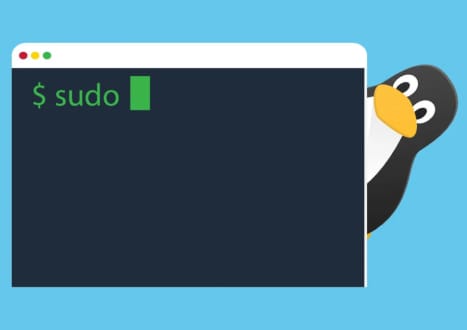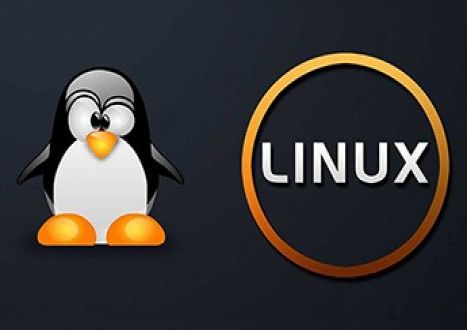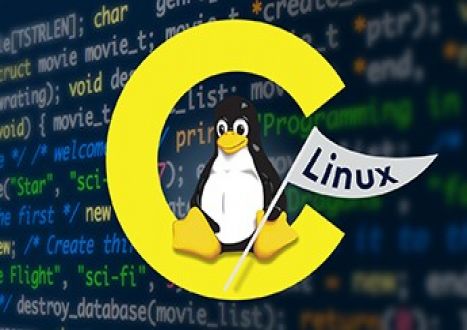- Home
- Video Courses
- Certifications
- 102-500: LPI Level 1 Dumps


102-500: LPI Level 1 Certification Video Training Course
102-500: LPI Level 1 Certification Video Training Course includes 126 Lectures which proven in-depth knowledge on all key concepts of the exam. Pass your exam easily and learn everything you need with our 102-500: LPI Level 1 Certification Training Video Course.
Curriculum for LPI 102-500 Certification Video Training Course













































102-500: LPI Level 1 Certification Video Training Course Info:
The Complete Course from ExamCollection industry leading experts to help you prepare and provides the full 360 solution for self prep including 102-500: LPI Level 1 Certification Video Training Course, Practice Test Questions and Answers, Study Guide & Exam Dumps.
Preparing for the LPIC-1 102-500 Linux System Administrator Exam
Course Overview
The LPIC-1 certification is a widely respected credential in the IT industry, designed to validate the skills of Linux system administrators. This course prepares candidates for the 102-500 exam, which assesses knowledge of Linux system management at an intermediate level.
Importance of Linux Skills in Today’s IT Environment
Linux powers many of today’s servers, cloud infrastructures, and embedded systems. Gaining expertise in Linux administration opens up numerous career opportunities across diverse sectors, making this course highly relevant.
Objectives of the Course
This course aims to equip learners with the skills required to install, configure, and manage Linux systems effectively. It focuses on practical administration skills and understanding core Linux concepts critical for the exam and real-world application.
Learning Approach and Methodology
The course combines theoretical knowledge with hands-on exercises. It encourages active learning through practical labs, real-world scenarios, and troubleshooting exercises to reinforce key concepts.
Benefits of Achieving LPIC-1 Certification
Holding the LPIC-1 certification demonstrates competency to employers, increases job prospects, and serves as a stepping stone for advanced Linux certifications such as LPIC-2 and LPIC-3.
Course Modules
Overview of Course Structure
The course is organized into ten main modules, each designed to cover specific exam objectives. These modules build on each other to develop a comprehensive understanding of Linux administration.
Module 1: System Architecture and Linux Installation
Understanding system architecture is fundamental. This module introduces learners to hardware components, BIOS/UEFI, bootloaders, and the Linux kernel. It guides through different installation methods across distributions.
Detailed Study of Boot Process
An in-depth look at the boot sequence, from BIOS/UEFI initialization to the loading of the kernel and initialization of system services. Troubleshooting boot failures is also covered.
Partitioning and Filesystem Setup
This section explains disk partitioning schemes, including MBR and GPT, and how to configure file systems during installation. The importance of swap space and different file system types is discussed.
Module 2: Package Management and Software Installation
The module addresses the various package management tools like dpkg, apt, rpm, and yum. Understanding package dependencies and repository management is a core focus.
Building Software from Source
Beyond package managers, learners explore how to compile and install software manually from source code, including configuring, building, and installing software packages.
Module 3: GNU and Unix Commands
Basic to advanced command-line utilities are introduced here. Learners become proficient with file manipulation, text processing, system monitoring, and permissions management.
Text Processing and Data Manipulation
Commands like grep, awk, sed, and cut are explained with practical examples to manipulate text and parse logs or configuration files.
Process Management and Job Control
Understanding how to manage running processes, foreground and background jobs, and signals is covered in detail.
Module 4: Devices, Linux Filesystems, and Filesystem Hierarchy Standard
This module explores device files in /dev, mounting mechanisms, and how Linux manages hardware devices.
Deep Dive into Filesystem Types
Each supported filesystem type such as ext4, XFS, and Btrfs is studied for its features and optimal use cases.
The Filesystem Hierarchy Standard (FHS)
Explains the standardized directory structure used in Linux systems, critical for system navigation and management.
Module 5: Shells and Shell Scripting
The bash shell environment is examined in depth, including customization and environment variables.
Writing and Debugging Shell Scripts
Learners gain skills in scripting basics, including flow control, functions, error handling, and debugging scripts.
Module 6: User Interfaces and Desktops
An introduction to graphical environments, session management, and configuration of desktop interfaces like GNOME and KDE.
Module 7: Administrative Tasks
Focuses on user and group management, permission schemes, and password policies.
System Time and Job Scheduling
Configuring system clocks, time zones, and scheduling recurring tasks with cron and at.
Module 8: Essential System Services
Management of core services including system logging, printing, and job scheduling through systemd and SysV init.
Module 9: Networking Fundamentals
Covers IP configuration, network troubleshooting tools, and firewall basics.
Module 10: Security
Explores system security essentials, including file permissions, access control lists (ACLs), SELinux basics, and system auditing.
Requirements of the Course
Introduction to Course Requirements
Before starting the LPIC-1 102-500 training course, it’s essential to understand the prerequisites and expectations. These requirements ensure that learners are well-prepared to absorb the course material and successfully complete the exam. Meeting these prerequisites will help maximize the value gained from the course.
Basic Linux Knowledge
While this course focuses on intermediate Linux administration skills, a foundational understanding of Linux basics is necessary. Candidates should be comfortable with navigating the Linux command line, managing files and directories, and performing basic system operations.
Familiarity with the Linux filesystem hierarchy, command syntax, and basic shell commands is expected. Without these foundational skills, learners may find the course challenging and may need to review introductory Linux materials before enrolling.
Familiarity with the Linux Command Line
Proficiency with the command line is crucial since most system administration tasks require using shell commands. This includes understanding command syntax, options, and arguments, as well as the ability to combine commands using pipes and redirection.
Learners should know how to use essential commands such as ls, cd, cp, mv, rm, and grep. Understanding file permissions, process management commands, and basic shell scripting will also be beneficial.
Basic Computer Networking Concepts
A fundamental understanding of networking is necessary to grasp topics like IP configuration, subnetting, routing, and firewall setup. Learners should be familiar with concepts such as IP addresses, DNS, TCP/IP, and basic network troubleshooting.
This background helps in understanding Linux network configuration files, services like SSH, and how to secure network communications on Linux systems.
Hardware and Software Requirements
To get the most out of this course, learners should have access to a computer or virtual machine capable of running a Linux distribution suitable for practice. Modern hardware with sufficient RAM (at least 4GB recommended) and disk space is needed for installing and running Linux OS, virtual machines, and tools.
The course recommends using popular Linux distributions such as Ubuntu, CentOS, or Debian for practice. Virtualization software like VirtualBox or VMware can be used to create test environments without affecting the host system.
Recommended Software Tools
In addition to a Linux system, learners will need access to several command-line tools and utilities covered throughout the course. These include text editors (vim, nano), package managers (apt, yum), network tools (ping, netstat), and scripting environments (bash).
Installing and using these tools regularly during the course is essential to build hands-on skills.
Familiarity with Virtualization Technology
Since setting up physical Linux machines for practice is not always practical, virtualization is commonly used for lab exercises. Basic knowledge of virtualization concepts and software, such as VirtualBox, VMware, or KVM, will help learners set up multiple Linux instances to experiment with networking and system administration tasks.
This knowledge allows candidates to simulate real-world scenarios, such as configuring network interfaces, managing services, and troubleshooting, in a controlled environment.
Soft Skills and Learning Attitude
Success in this course requires strong problem-solving skills and an analytical mindset. Linux system administration often involves troubleshooting complex issues, interpreting logs, and managing configuration files.
Being patient, detail-oriented, and persistent will help learners navigate challenges and deepen their understanding. A proactive learning attitude, including experimenting with commands and exploring beyond the curriculum, is encouraged.
Time Commitment and Study Plan
Preparing for the LPIC-1 exam is a significant commitment. The course requires consistent study time to master both theoretical concepts and practical skills.
Setting a study schedule that allocates time daily or weekly for lessons, lab practice, and review is recommended. Regular practice with real Linux systems is critical to reinforce learning and build confidence.
Prior Experience with Linux Administration
While prior professional experience is not mandatory, having some hands-on experience in Linux administration accelerates the learning process. Candidates who have worked in roles involving Linux server maintenance, user management, or software installation will find this course easier.
However, the course is also designed to help those transitioning into Linux administration roles, providing detailed explanations and practical examples.
Language Proficiency
Since the course and exam materials are in English, proficiency in reading and understanding technical English is important. Understanding command syntax, configuration files, and error messages often requires a good grasp of the language.
Non-native speakers may want to complement their studies with additional resources or language support if needed.
Access to Online Resources and Documentation
Linux is heavily reliant on open-source community resources and official documentation. Learners are encouraged to familiarize themselves with man pages, online forums, official Linux documentation, and community sites.
Access to these resources is necessary for troubleshooting and deepening knowledge beyond the course materials.
Importance of Hands-On Practice
This course stresses hands-on experience, which means learners must dedicate time to practicing commands, writing scripts, configuring services, and troubleshooting.
Reading theory alone is insufficient; real skill is developed by applying knowledge in live environments. This practical approach also prepares candidates to tackle exam scenarios effectively.
Exam Registration and Eligibility
Before enrolling in the course, candidates should review the exam registration process and eligibility criteria provided by the Linux Professional Institute. Understanding exam policies, fees, and testing procedures helps in planning the certification journey.
Candidates must also check for any updates to the exam syllabus to ensure their preparation aligns with the latest objectives.
Technical Support and Community Engagement
Engaging with online communities, forums, or study groups can greatly enhance learning. Access to technical support during the course, whether through instructors, peers, or online platforms, provides valuable assistance when encountering difficult topics or errors.
Participating in discussions and sharing knowledge reinforces understanding and builds a professional network.
System Backup and Recovery Knowledge
The course assumes learners have a basic understanding of backup and recovery concepts. Managing data integrity, creating backups, and restoring systems are important administrative tasks covered in the broader scope of Linux system management.
Knowing how to safeguard data and recover from failures is crucial for real-world administration.
Security Awareness and Best Practices
Security is a core theme in Linux administration. Candidates should be aware of basic security principles, such as the principle of least privilege, secure passwords, and firewall basics.
Understanding security best practices helps learners configure Linux systems that are robust against threats and comply with organizational policies.
Hardware Compatibility and Drivers
A fundamental understanding of hardware compatibility and drivers in Linux systems is beneficial. Knowing how Linux interacts with different hardware components and how to manage device drivers is essential for troubleshooting hardware-related issues.
This knowledge is especially useful in environments with diverse or legacy hardware.
Understanding Linux System Services
Candidates should have a conceptual understanding of system services, daemons, and init systems like systemd. Knowing how services are started, stopped, and managed forms the basis of service administration, which is a significant part of the course.
Familiarity with service management commands is expected.
File System Permissions and Access Control
A strong grasp of Linux file permissions, ownership, and access control mechanisms is vital. The course builds on these concepts to explore advanced permission management techniques such as ACLs and SELinux.
Candidates should be comfortable interpreting permission strings and using chmod, chown, and related commands.
Awareness of Backup and Disaster Recovery Procedures
While the course focuses primarily on administration and configuration, having awareness of backup strategies and disaster recovery processes enhances a candidate’s preparedness for real-world system management challenges.
Practical Troubleshooting Skills
The ability to diagnose and resolve common Linux issues is emphasized throughout the course. Candidates are expected to develop a troubleshooting mindset, using log analysis, system monitoring tools, and configuration reviews to identify and fix problems.
Summary of Course Requirements
To summarize, the LPIC-1 Exam 102-500 course requires foundational Linux knowledge, command-line proficiency, basic networking understanding, appropriate hardware/software setup, and a commitment to hands-on practice. Soft skills such as problem-solving and a proactive learning attitude are equally important for success.
Meeting these requirements ensures learners are well-prepared to tackle the course material and ultimately succeed in the LPIC-1 certification exam.
Course Descriptions
Comprehensive Coverage of Linux System Administration
This course offers an in-depth exploration of Linux system administration fundamentals and intermediate concepts. It is designed to build a strong technical foundation that empowers learners to manage Linux systems confidently and effectively. The curriculum aligns closely with the LPIC-1 102-500 exam objectives, ensuring candidates acquire the knowledge needed to pass the exam while gaining practical skills.
Emphasis on Hands-On Learning
A defining feature of this course is its emphasis on hands-on learning. Theoretical knowledge is reinforced through practical lab exercises that simulate real-world Linux administration scenarios. Tasks such as installing Linux, managing user accounts, configuring network services, and writing shell scripts provide essential experience that helps bridge the gap between theory and practice.
Modular Approach for Structured Learning
The course is organized into distinct modules covering core areas such as system architecture, package management, command-line tools, filesystems, shell scripting, administrative tasks, networking, and security. This modular design allows learners to focus on one topic at a time, building complexity gradually and mastering each skill before moving on.
Detailed Explanations and Real-World Examples
Each topic within the course is explained in detail, with a focus on why certain processes and configurations are necessary. Real-world examples illustrate how Linux systems are used in diverse environments, helping learners understand practical applications and best practices.
Coverage of Exam Objectives
The course content maps directly to the LPIC-1 102-500 exam objectives, ensuring comprehensive exam preparation. Topics include managing system architecture and boot processes, configuring package management tools, utilizing GNU and Unix commands efficiently, administering filesystems, and mastering shell scripting. Networking and security topics are also covered thoroughly, reflecting their importance in modern Linux administration.
Focus on Troubleshooting and Problem Solving
Beyond command execution, the course emphasizes developing troubleshooting skills essential for any system administrator. Learners engage in diagnosing and resolving common issues, interpreting system logs, and recovering from configuration errors, equipping them with confidence to handle unexpected problems.
Use of Open Source Tools and Technologies
The course exclusively uses open-source tools and Linux distributions, mirroring the environments that candidates will encounter professionally. This approach ensures familiarity with the tools and systems in widespread use today, including distributions such as Ubuntu, Debian, CentOS, and Fedora.
Practical Shell Scripting Skills
Shell scripting is an essential part of this course, enabling learners to automate repetitive tasks, improve efficiency, and manage system processes effectively. The scripting modules cover everything from basic syntax to advanced functions, encouraging learners to write robust and maintainable scripts.
Networking and Security Essentials
The networking section teaches fundamental network configuration and management, while the security modules highlight best practices for securing Linux systems. Topics such as user permissions, firewall configuration, and SELinux basics provide a security-first mindset critical for administrators.
Continuous Assessment and Review
Throughout the course, learners are encouraged to test their understanding through quizzes, practice questions, and hands-on assignments. These assessments provide feedback on progress and identify areas requiring additional study.
Preparation for Professional Certification
The course is crafted not only to prepare learners for the exam but also to help them succeed as Linux system administrators in the workplace. It balances certification requirements with real-world skills, making the learning experience relevant and practical.
Who This Course Is For
Aspiring Linux System Administrators
This course is ideal for individuals aspiring to become Linux system administrators. Whether transitioning from another IT role or starting a career in system administration, learners will gain the foundational and intermediate skills necessary to manage Linux systems confidently.
IT Professionals Seeking Certification
Experienced IT professionals who want to formalize their Linux knowledge with an industry-recognized certification will find this course beneficial. It provides structured guidance to cover all exam objectives and fill any knowledge gaps.
Developers and Engineers Working with Linux Environments
Developers and engineers who use Linux environments in their workflows can benefit from understanding system administration tasks. This course helps them troubleshoot issues, manage development servers, and optimize environments for application deployment.
System Administrators Expanding Their Skill Set
System administrators primarily working with other operating systems like Windows may take this course to expand their expertise into Linux, enabling them to manage hybrid environments effectively.
Students and Career Changers
Individuals new to IT or changing careers can use this course as a stepping stone into Linux administration. The course is designed to accommodate learners with basic Linux knowledge, offering a clear path to gaining a valuable certification.
Network Administrators Enhancing Their Knowledge
Network administrators seeking to understand Linux networking, services, and security will benefit from this course. It covers essential networking concepts tailored to Linux systems and practical management techniques.
Technical Support Specialists
Technical support personnel who assist users on Linux systems can deepen their understanding of system internals, command-line troubleshooting, and service management by completing this course.
IT Consultants and Freelancers
Consultants and freelancers offering Linux support services need to validate their skills. This course equips them with the knowledge to confidently assist clients, perform system setups, and troubleshoot complex issues.
Linux Enthusiasts and Hobbyists
Individuals passionate about Linux and open-source technology who want to formalize their knowledge and challenge themselves with a professional exam will find this course engaging and rewarding.
Organizations Training Their Staff
Companies investing in staff development can use this course to train IT teams on Linux fundamentals and best practices, ensuring a consistent level of knowledge across the organization.
Candidates Preparing for Future Advanced Certifications
LPIC-1 certification serves as a prerequisite for more advanced Linux certifications such as LPIC-2 and LPIC-3. Learners planning to pursue advanced certifications will benefit from a solid foundation provided by this course.
Individuals Seeking Practical Skills for Job Roles
Beyond certification, this course equips learners with practical skills needed in job roles such as system administrator, network administrator, DevOps engineer, and cloud infrastructure engineer.
Summary of the Target Audience
In essence, this course is designed for a wide range of learners, from beginners with basic Linux experience to seasoned IT professionals aiming for certification and enhanced skills. It bridges the gap between theoretical knowledge and real-world application, making it suitable for anyone serious about mastering Linux system administration.
Student Feedback
Similar LPI Video Courses







Only Registered Members Can Download VCE Files or View Training Courses
Please fill out your email address below in order to Download VCE files or view Training Courses. Registration is Free and Easy - you simply need to provide an email address.
- Trusted By 1.2M IT Certification Candidates Every Month
- VCE Files Simulate Real Exam Environment
- Instant Download After Registration.
Log into your ExamCollection Account
Please Log In to download VCE file or view Training Course
Only registered Examcollection.com members can download vce files or view training courses.




